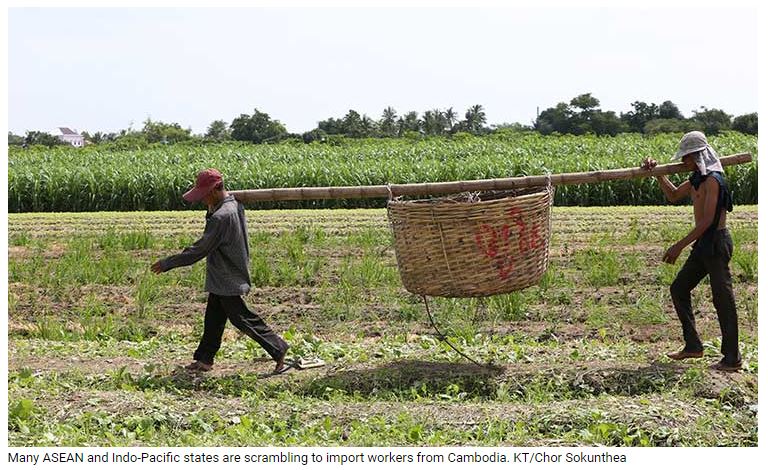Labour export from Cambodia on an upswing
With the expected revival of economic activities and China’s decision to ease Covid-19 curbs, many ASEAN and Indo-Pacific states are scrambling to import workers and they are looking at Cambodia.
Several tourism properties in south Pattaya, a major Thai tourist destination, are reportedly seeking new employees and have urged the foreign worker registration bureau to recruit more from Cambodia and Myanmar. Though, the jobs are for waiters and cleaning staff.
As part of the government-to-government (G2G) initiative, Cambodia may send some 3,000 workers this year to work in Israeli agricultural farms, according to the Ministry of Labour and Vocational Training. They could be sent under a five-year employment contract.
The format of the G2G system, being discussed for some time, is said to be nearing completion. After the agriculture sector, next year Israel may open the construction sector’s doors to Cambodian workers and employ around 5,000 in the sector.
The Cambodian Labour Ministry is also widening cooperation with South Korea and plans to send through the Overseas Workers Training Programme more seasonal workers, the demand for which arises between March and July every year. There could be a demand for 4,000 labourers to work primarily on farms.
Cambodia has been sending workers to South Korea since the first Employment Permit System, worked out as per a memorandum of understanding (MoU) signed on November 20, 2006, by Prime Minister Hun Sen and Roh Moo-Hyun, former President of South Korea. Since 2010, South Korea has become the second most popular destination for Cambodian workers, says the International Labour Organisation
At present, according to an August 2022 report, over 46,460 Cambodians are employed in South Korea’s industry, agriculture, and construction, among others. While 26,599 Cambodian workers returned home on completion of contracts, 46,199 are still in South Korea, said Heng Sour, secretary of state at the Ministry of Labour and Vocational Training, recently.
At a meeting on December 22 between Kandal Governor Kong Sophorn and Choi Dong-in of Heupect, the possibility of shipping more workers to South Korea was taken up. South Korea has made it easier for Cambodians to get work and has also shown interest in importing workers to be employed in local farms.
The Kandal administration may send around 26,000 skilled workers as requested by the South Korean authorities and has already sought the nod of the Finance Ministry. Assuring Choi Dong-in about meeting the request, the Kandal Governor reportedly said it will be a good opportunity for local youth to raise their family’s income and also contribute to the national economy.
The Cambodian Labour Migration Policy and Action Plan (2019-2023) outlines the government’s commitment to leveraging the benefits of labour migration for the country’s long-term development. The policy is unique within South-East Asia in applying a holistic and multi-ministerial approach to labour migration governance.
Also, the free movement of labour is one of the core elements of the ASEAN Economic Community’s (AEC) single market and production base. By implementing the free movement of labour, the ASEAN (Association of Southeast Asian Nations) aims to allow practitioners in some professions to practice in other member states and facilitate temporary cross-border movement of natural persons and business visitors engaged in trade in goods, trade in services, and investment, according to a National University of Singapore report.
For the 10-member ASEAN with a combined population of around 650 million, in the last two decades, labour migration has emerged as a significant driver of economic growth and development. The region holds both countries of net origin (Cambodia, Indonesia, the Lao People’s Democratic Republic, Myanmar, the Philippines and Vietnam) and destinations (Brunei Darussalam, Malaysia, Singapore and Thailand).
According to the United Nations Department of Economic and Social Affairs, Cambodia is a major country of origin for migrants with over 700,000 living abroad in 2019. The primary destination country for Cambodian migrant workers in Thailand, and among ASEAN member states, Malaysia receives the second-highest number of documented migrants.
Cambodia has an MoU with Japan, and for Cambodian migrant workers, it is emerging as a popular destination in recent times.
Source: https://www.khmertimeskh.com/501211892/labour-export-from-cambodia-on-an-upswing/


 English
English




